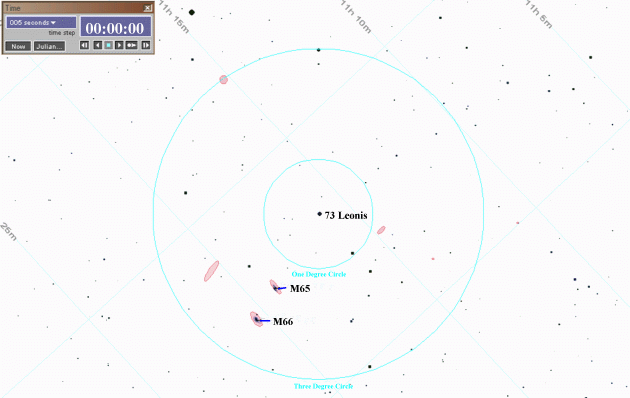
| Finder Charts for Drifting Through a Galaxy Cluster |
Chart One 00:00:00 (Zero Hours, Zero Minutes, Zero Seconds)

If you have a wide field telescope or binoculars, you may see M65 and M66 off center once you center the star 73 Leonis. These galaxies will slowly drift near the center of the field.
Chart Two 00:04:00 (Four minutes and zero seconds after start time)

The galaxies M65 and M66 will now be in the position shown. Remember, if you're using a reflecting telescope, you would turn this illustration upside down to compare. If you don't see these galaxies, you may want to make sure you do have the right star centered for 73 Leonis. Remember, these galaxies will appear as very small, faint glows. The other possibility is that you need a darker sky. Try again out in the country, far away from city lights. My notes tell me that M65 and M66 were "fairly easy" to see with a 60mm, 22 power Bushnell spotting scope from Pickett State Park. Barely visible was the third galaxy in this trio, NGC 3628, a nice "edge on" galaxy.
If you can see M65 and M66, you have "calibrated" your vision for bright galaxies. Now it's time to take about a 50 minute break, in order to allow the earth to point the telescope to the Virgo Cluster.
You may want to spend some time reviewing the constellations, or scanning with binoculars. Don't go inside to a brightly lit room. It takes about 45 minutes to get complete dark adaptation for your eyes, and you want to be completely dark-adapted when you return to view some of the Virgo Cluster members.
Chart Three 1:00:00 (One hour after start time)
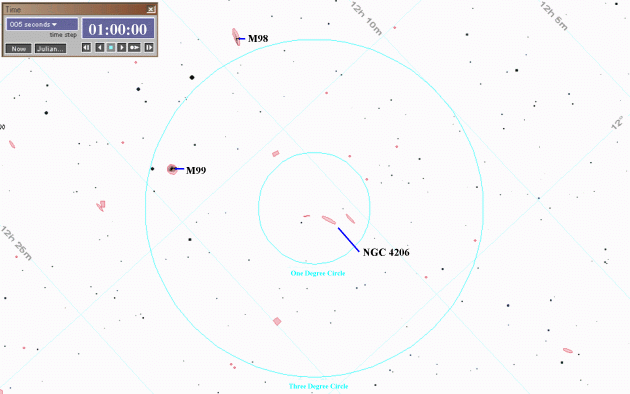
If you have a large field, you may see M98 at the top of your field (remember, bottom of your field for reflectors) and M98 to the east of it. My notes show that these galaxies were "faint" in a 60mm, 22 power Bushnell spotting scope, even in a very dark sky. If you have a smaller field of view, don't move the scope! Instead, see if you can see the largest of the galaxies crossing the 1 degree field, NGC 4206. It will be quite a bit fainter than any of the Messier objects.
Chart Four & Five 1:09:30 (One hour, 9minutes and 30 seconds after start time)
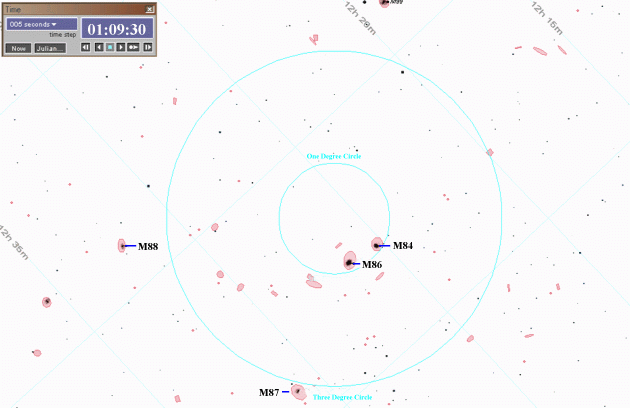
We are now in the heart of the Virgo Cluster. Messier 84 and Messier 86 should be crossing the edge of a 1 degree field. My notes show them as both "fairly easy" in the 60mm Bushnell scope at 22 power under the very dark skies of Rugby, Tennessee. If you have a 4 inch or larger scope, see how many of the galaxies in the chain of galaxies stretching out to the east (called Markarian's Chain) that you can see. Reposition your telescope to place M84 and M86 as shown in the illustration below. Watch as the bright galaxy M87, the brightest member of the Virgo cluster, drifts by. My notes show it as "easy" in a 60mm spotting scope at 22 power under the dark skies of Rugby, Tennessee.
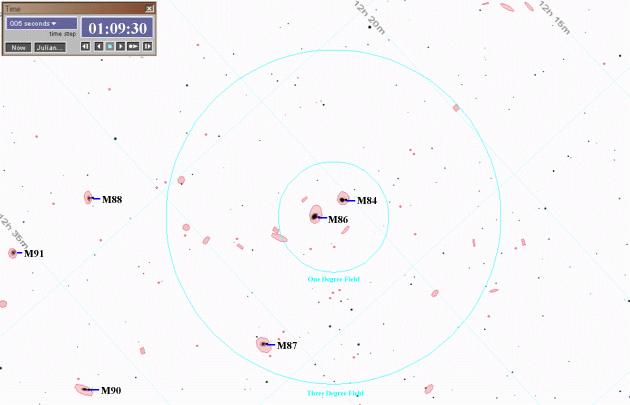
With a large telescope you may see all of the galaxies shown, although you will have a smaller field of view.
Chart Six 1:20:05 (One hour, 20 minutes and 05 seconds after start time)
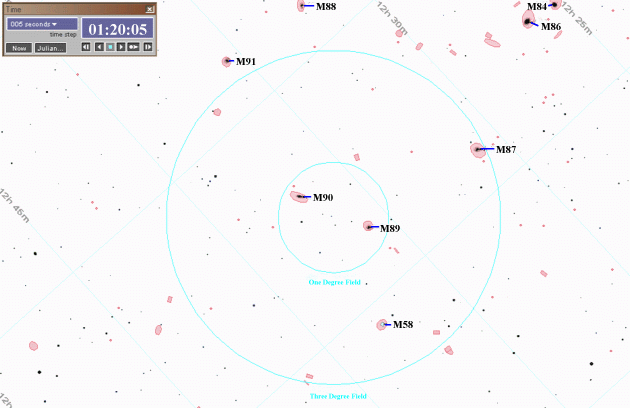
Messier objects M89, M90 and M58 drift through the field of view. My notes show M89 as "fairly easy" and M90 as "faint" in the 60mm spotting scope at 22 power. I could also see M58 in the 60mm scope but I didn't note the brightness.